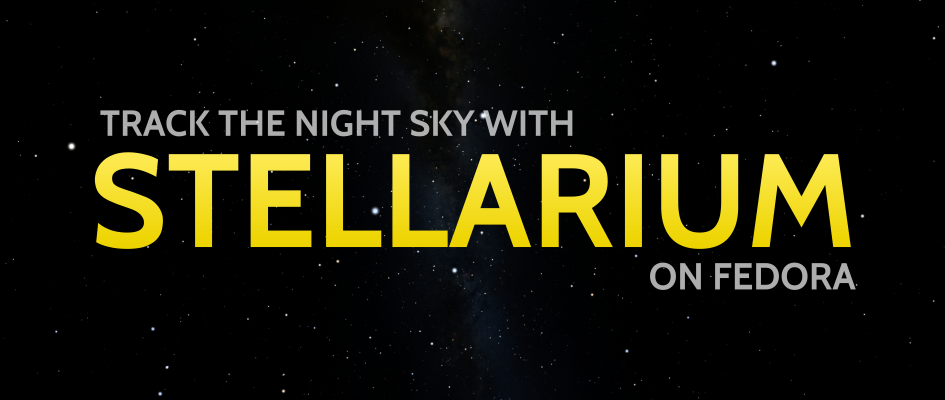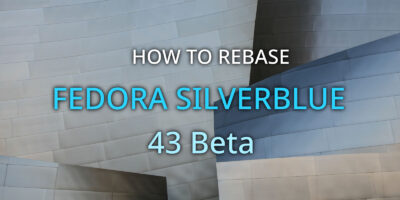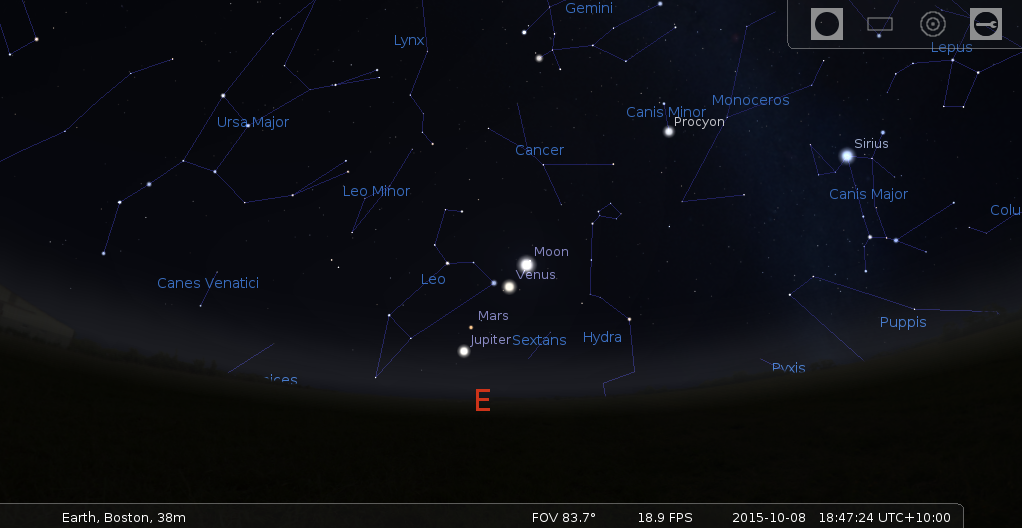Ever looked up at the night sky and tried to identify specific celestial bodies out of the millions you can see? Stellarium is an awesome open source planetarium application available in Fedora to help you identify and track objects in the night sky. Basically, it simulates the night sky and provides labels and other tools to help you know what you are actually looking at.
Finding items in the night sky
Stellarium labels the objects in the night sky that are of interest, and provides directional labels as well to help identify the objects in the sky. There are also options to show labels for deep-sky objects and exoplanets.
Identifying constellations
Stellarium also draws lines between and labels the multiple stars that make up the constellations, and also has a mode that overlays constellation artwork over the simulated sky.
View the night sky from anywhere
You can also set the location to anywhere on Earth (or Mars, or many other bodies) where you want to simulate the night sky
Stellarium can also do a lot more, like view how Supernovae looked from earth at previous points in history, show meteor showers, identify and track satellites around earth like the International Space Station, and also follow specific bodies through the sky. Also, if you have a compatible telescope, you can use stellarium to control the positioning of your telescope.
Stellarium is available in the Official Fedora Repositories, so you can install via the Software application on Fedora Workstation, or via the command line with the command:
sudo dnf install stellarium









Michael
Can this application tour you through the cosmos? I sat in a public demo of a planetarium software where they demonstrated flight through space from earths crust out too pluto and well into the universe. They zoomed to Andromeda, and back to the Sun.
It was a beautiful piece of software.
Ryan Lerch
AFAIK, stellarium cannot do things like a tour of the cosmos. However there is another application called Celestia in the Fedora repos that can.
To have a quick look at what it is capable of, install it with:
and once you have launched it, go to Help > Demo, and celestia will take you on a tour of parts of the solar system, and the galaxy.
Atsuri
While I understand that this is the Fedora Magazine, I think it’s fairer to state that many apps, such as Stellarium here, are available to most (if not all) Linux distributions. The wording ” Stellarium is an awesome open source planetarium application available in Fedora(…)” gave me the false impression that Stellarium was made for Fedora explicitly.
I think we Fedorians should stress promotion of open-source software in general a bit more :).
Samuel Sieb
As a native English speaker, there is no implication in that sentence that it’s only for Fedora. And the point that it’s open source also makes it extremely unlikely that it would be.
Rob Colbert
This is a misunderstanding. They did not say available exclusively in Fedora, only in Fedora, as part of Fedora, etc. Available = optional. They’re saying that it’s out there (generally speaking) and that Fedora users can install it and use it. There is no confusion. And, I’m going to assume you are brand-new to Linux or Fedora in general.
Fedora, as a project, philosophy, community and user base have all (I truly mean all) been exclusively promoting open source software. For example, on a default Fedora setup, you cannot play an MP3 due to licensing and proprietary software. You can’t play Flash movies in Firefox by default. As delivered by the project according to the project’s philosophy, I argue there aren’t (m)any distributions nearly as open as Fedora. And, none of them advocate for open source more strongly and with more muscle.
Did you mean to file this comment over in Ubuntu’s forum?
Null Pointer
https://fedoramag.wpengine.com/full-mp3-support-coming-soon-to-fedora/
😉
lupinix
Not to forget: We also have Fedora Astronomy with Stellarium and other applications installed by default 🙂 https://labs.fedoraproject.org/en/astronomy/
Honey Bee XCIX
I installed Stellarium, and tried it out a bit.
I don’t see very well, and I can’t afford eyeglasses or optics, but this morning before dawn I was treated to a beautiful view of the crescent moon and the morning star [planet] Venus, which were rising just before the sun.
For some reason, Venus itself is brightest when it is a crescent, closest to Earth in its orbit, and the sunlight is glancing off the edge of its atmosphere.
I’m trying to think this through — it takes me a while.
The solar system mostly orbits counter-clockwise as seen from the stellar north, so to an observer on the earth, the moon rises and sets “slower” — by one day per lunar month — than the sun. So a crescent moon visible in the morning — “(” from the northern hemisphere — is waning, and a crescent moon visible in the evening — “)” from the northern hemisphere — is waxing.
So, because the moon orbits the earth counter-clockwise as seen from the north, its phases appear to shift from right to left as seen from the earth’s northern hemisphere.